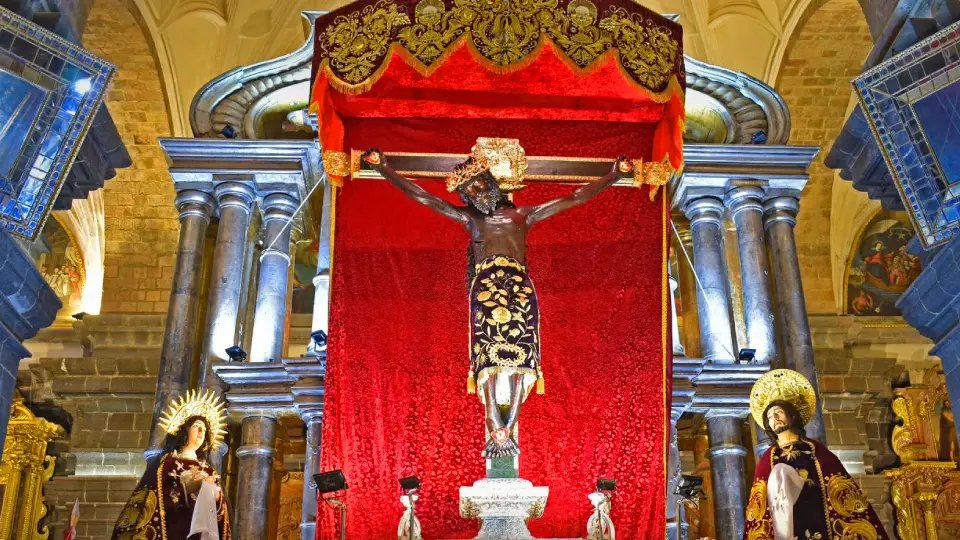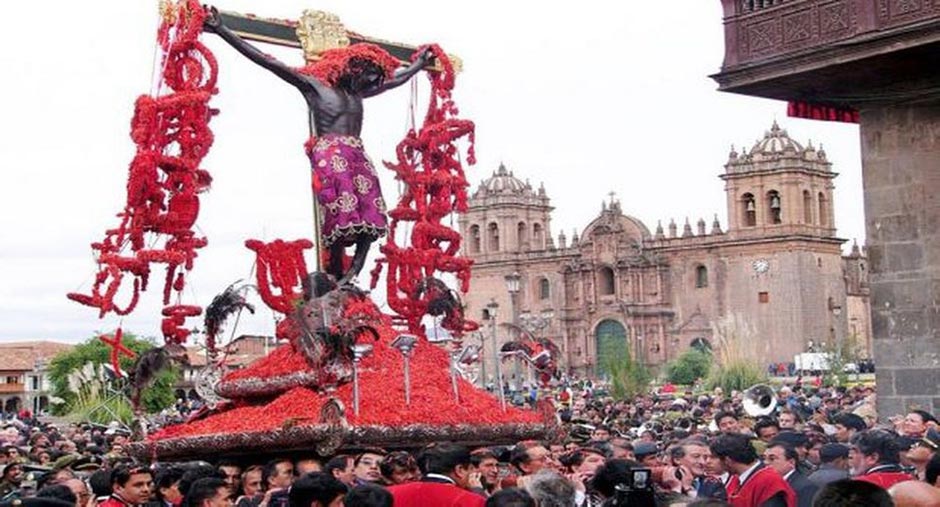A Devotion Born from the Heart of the Andes
The story of the Lord of the Earthquakes is more than just a religious tradition—it is a living symbol of faith, resilience, and hope for the people of Cusco. This image of the crucified Christ is housed in Cusco’s Cathedral, and its presence has deeply marked the spiritual history of the city.

Origin of the Image
The image of the Lord of the Earthquakes dates back to the mid-16th century, when Cusco was still adapting to the new faith brought by the Spanish. It is believed to have been a gift sent by Charles V or his son Philip II to assist in the evangelization of Indigenous peoples. At that time, the image replaced another representation of Christ known as the Christ of the Good Death.
The Miracle of the Great Earthquake
The beginning of Cusco’s deep devotion to this image is tied to a powerful earthquake that struck the city on March 31, 1650. Colonial structures began to collapse, and panic spread among the population.
In the midst of the chaos, the faithful brought out the image of Christ in a procession through the streets of Cusco, begging for protection. According to tradition, the tremors miraculously ceased once the image appeared. Since then, it has been known as the “Lord of the Earthquakes,” protector of Cusco.
The Procession of the Lord of the Earthquakes
Since 1741, the traditional procession of the Lord of the Earthquakes has been held every Holy Monday as part of the Holy Week celebrations. During the event, the image travels through Cusco’s Historic Center as thousands of people pay tribute with flowers, chants, prayers, and offerings.
This procession is not only an act of faith but also a clear example of how Andean beliefs have blended with Christianity. Many of the elements present in the celebration have pre-Hispanic roots, making this a unique expression of cultural identity.

A Symbol of Hope and Strength
Today, the Lord of the Earthquakes remains a central figure in Cusco’s religious life. For its people, He represents protection in difficult times and hope in the face of adversity. His presence lives on not only in the Cathedral but in the heart of every Cusqueñan who prays to Him and accompanies Him every Holy Monday.